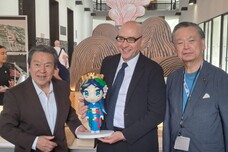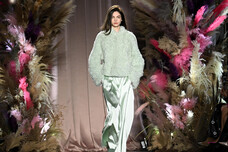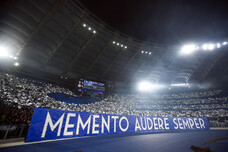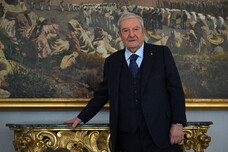Swedish Queen Christina's fund of invaluable Gian Lorenzo Bernini's drawings has returned to Rome after a 300-year absence. Some 120 works of the Roman and European Baroque creator will be at Palazzo Barberini until May 24, reconstructing the lengthy career of the 17th-century master who focused on drawing to enrich his unrivaled art. Bernini was a genius that changed the face of Rome, Daniela Porro said in her last speech as superintendent of Rome museums - now director of the Lazio regional secretariat for the culture ministry - who noted that Bernini's work had come back into the spotlight due to the unfortunate act of vandalism that seriously damaged the Barcaccia fountain in Piazza di Spagna recently. 'Il Laboratorio del Genio. Bernini Disegnatore' ('The Genius's Workshop. Bernini as Draughtsman') is therefore a sort of redemption, added Jeanette Stoschek, Sebastian Schutze and Giovanni Morello, curators of the exhibition, which has already had an edition in Leipzig. The large fund of drawings has long been held in the Museum der bildenden Kunste of the German city, where volumes containing the drawings of Bernini, Salvator Rosa and other Baroque artists came in 1713. As has been shown by recent studies, the collection of drawings was owned by Queen Christina and sold by the Roman antiques dealer Francesco Antonio Renzi, in part to the authorities in Leipzig - at that time possibly the European capital in terms of book production. After staying in storage for centuries, the drawings re-emerged in 1914. A systematic study of them was only conducted in 1960, though.
The curators' selection for the Rome exhibition aims to illustrate the importance of Bernini, who worked on drawing techniques his entire life. "Drawings as works of art and not as a means to design famous architecture," Porro said, while Schutze underscored the variety of genres dealt with by the Baroque master in drawing. The exhibition itinerary begins with a series of portraits - often of unknown individuals - that are sometimes sketches and other times complete works that "make the person tangible". It was with a drawing of Saint Paul that Pope Paul discovered the genius of the young Gian Lorenzo. And while there are exceptional caricatures of Scipione Borghese and French cardinals, the 'autonomous' drawings are extraordinary - moments of reflection by the 'maestro', mostly of a religious nature. The exhibition includes the only work left by Bernini that was inspired by antiquity: a Laocoon portrayed in the Vatican Belvedere, as well as studies for St Jerome and sculpture ('The Ecstasy of St Theresa') and architectonic (St Peter's Basilica, Fontana dei Quattro Fiumi in Piazza Navona, the elephant in Piazza della Minerva and Cappella Chigi in Santa Maria del Popolo) projects.
The exhibition ends with sketches for furniture, including a mirror for Queen Christina and pyrotechnic machines for the Spanish Infanta.
ALL RIGHTS RESERVED © Copyright ANSA











